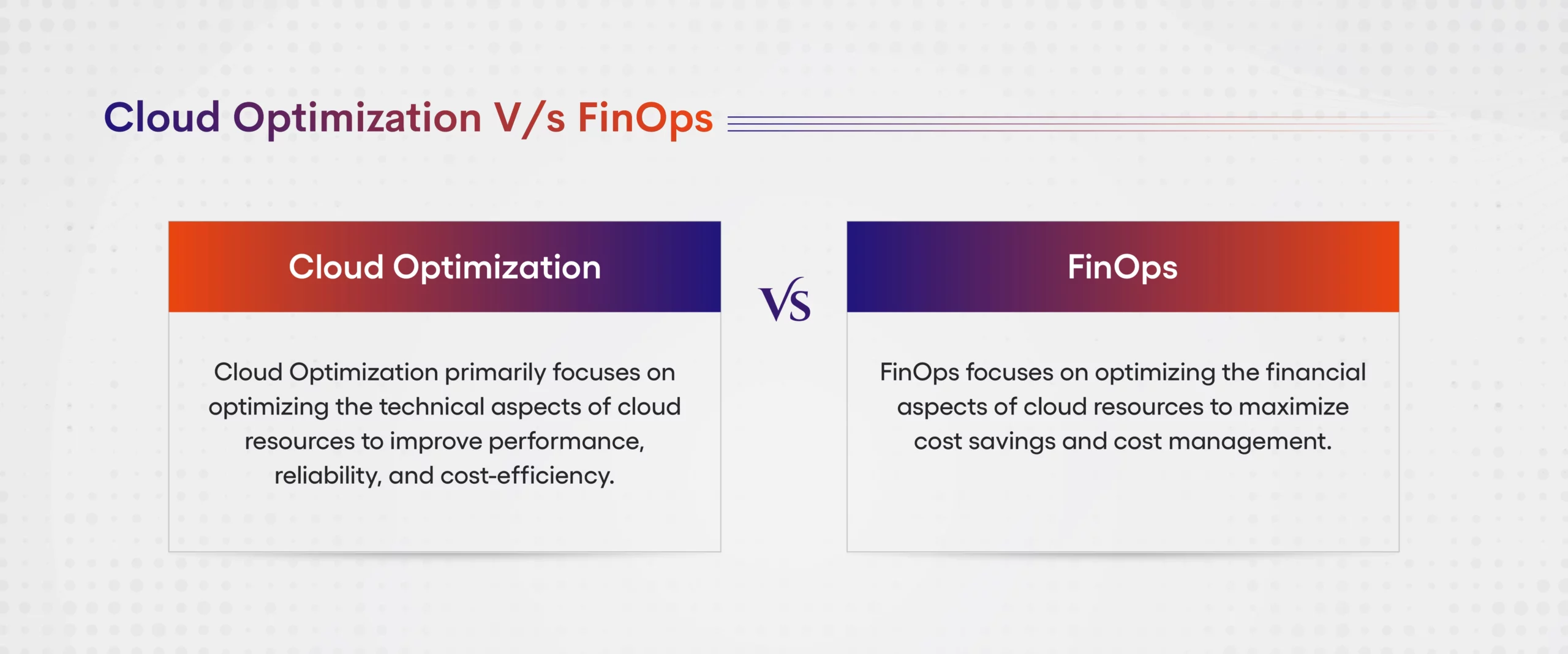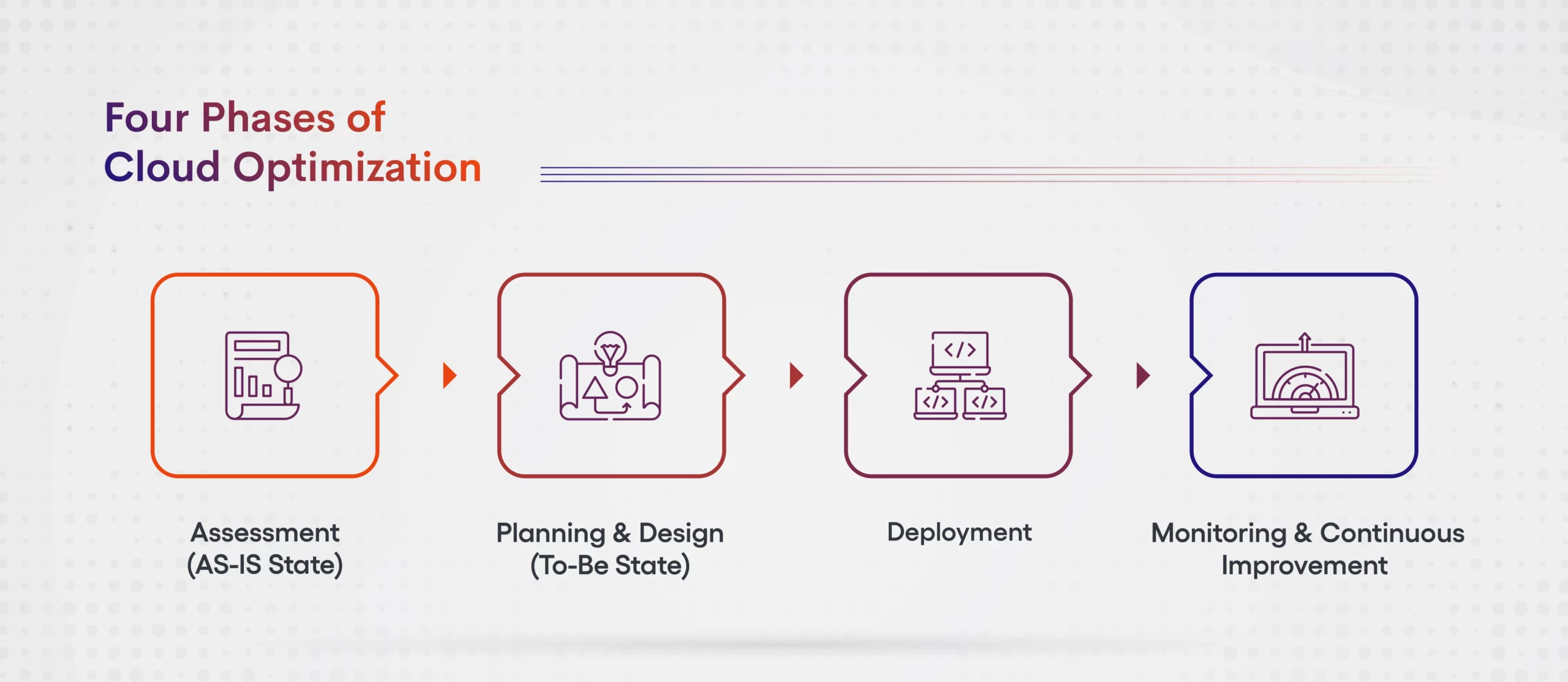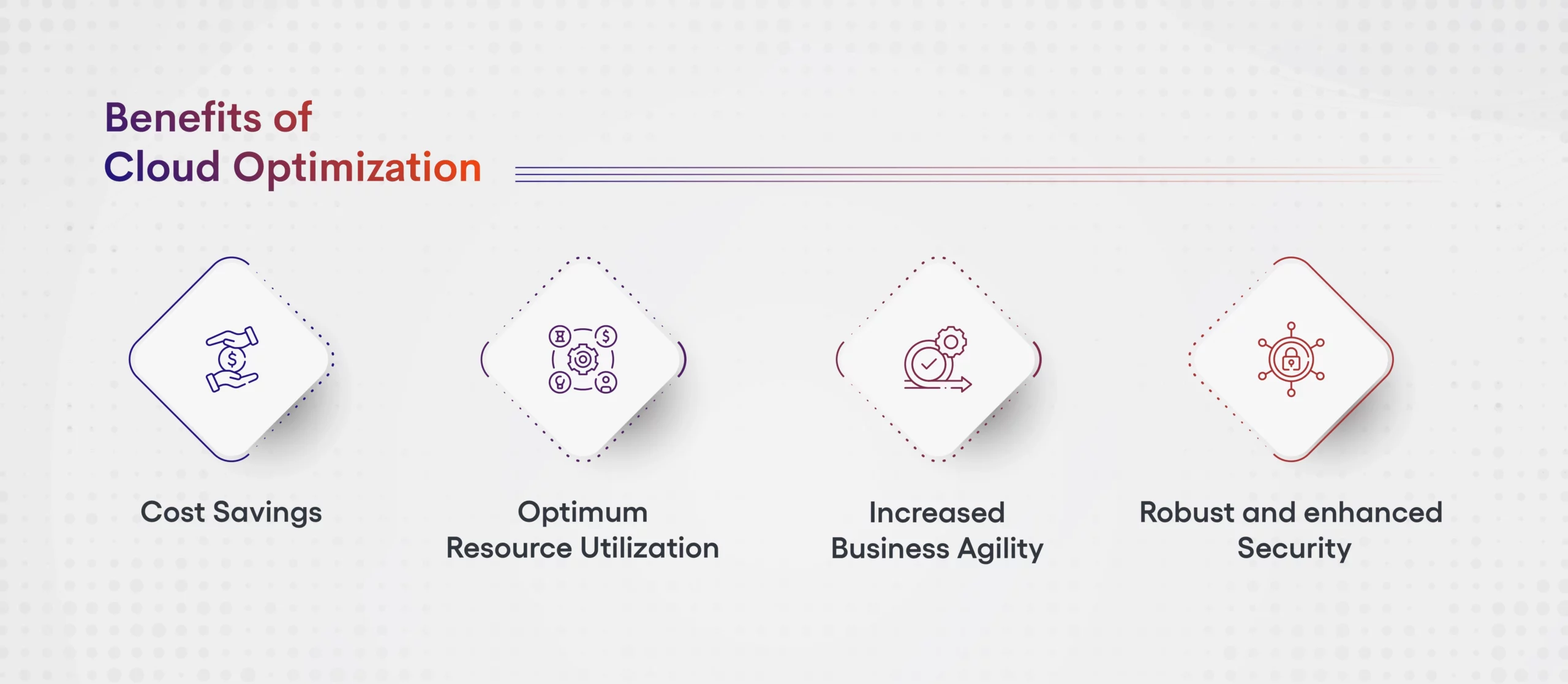- Blog
- May 15, 2023
Cloud Optimization: Maximizing Cloud ROI

- Blog
- May 15, 2023
Cloud Optimization: Maximizing Cloud ROI
Cloud Optimization: Maximizing Cloud ROI
In today’s economic downturn, saving costs is paramount. With cloud adoption increasing rapidly, companies are facing new challenges, such as managing complex cloud environments, controlling costs, and ensuring compliance with industry regulations. Cloud optimization can help address these challenges by identifying opportunities to reduce costs, optimize performance, and enhance security.
In this blog article, we have discussed the role, and essence of Cloud optimization and how it can help your business to stay resilient.
Why Cloud Optimization is important?
Cloud optimization is important because it can help organizations save costs, improve performance and reliability, and ensure they are using cloud resources effectively. Without proper optimization, companies may overspend on cloud resources, experience slow application performance, or face reliability issues. By optimizing their cloud usage, organizations can achieve better cost-efficiency, scale their operations effectively, and stay competitive in the rapidly evolving cloud computing landscape.
Yes, there are several facts and data points on cloud optimization. Here are a few examples:
- According to a report, organizations waste 35% of their cloud spend on unused or oversized resources.
- Another study found that 56% of cloud bills are over 25% higher than they should be.
- A survey found that cost optimization is the top priority for cloud users, with 64% of respondents naming it as their biggest challenge.
- A case study found that a company was able to save $1.5 million in annual cloud costs through optimization efforts.
These statistics demonstrate the importance of cloud optimization and the potential cost savings that can be achieved through proper management and monitoring of cloud resources.
How Cloud Optimization is different from FinOps?

FinOps (short for “Financial Operations”) is different from Cloud Optimization. Cloud Optimization primarily focuses on optimizing the technical aspects of cloud resources to improve performance, reliability, and cost-efficiency. FinOps, on the other hand, focuses on optimizing the financial aspects of cloud resources to maximize cost savings and cost management. FinOps includes processes and practices for financial accountability, cost allocation, budgeting, forecasting, and cost optimization. Both Cloud Optimization and FinOps are important for achieving cost-efficient and effective cloud resource management.
Phases of Cloud Optimization
Cloud Optimization has four distinct phases as follows

- Assessment (AS-IS State): This phase involves a thorough evaluation of the current cloud infrastructure, application architecture, and usage patterns to identify areas for optimization. This may include analyzing usage metrics, identifying underutilized resources, and evaluating performance bottlenecks.
- Planning & Design (To-Be State): Based on the assessment, a plan is developed to optimize the cloud infrastructure, including resource allocation, application architecture, and deployment strategies. This may involve identifying cost-saving opportunities, optimizing resource utilization, and improving application performance.
- Deployment: This phase involves implementing the optimization plan, including adjusting resource allocations, modifying application architecture, and implementing new deployment strategies. It may also include the adoption of automation tools to simplify and streamline cloud management processes.
- Monitoring and Continuous Improvement: Once the optimization plan is implemented, ongoing monitoring and continuous improvement are critical to maintaining optimal performance and cost efficiency. This may include setting up alerts to detect performance issues, regularly reviewing usage metrics, and making adjustments as necessary.
Tips and Tricks for Cloud Optimization
Enterprises can follow some of the below tips and tricks for Cloud Optimization.
- Monitor your cloud resources regularly to identify underutilized or idle resources.
- Use automation to scale resources up or down as needed, based on demand.
- Leverage cost optimization tools and services to identify and eliminate unnecessary expenses.
- Choose the right cloud instances and sizes for your workloads to optimize cost and performance.
- Implement security and compliance best practices to ensure data protection and regulatory compliance.
- Optimize data storage by using the appropriate storage type for each workload.
- Use cloud-native tools and services whenever possible to reduce complexity and improve performance.
Cloud optimization has several benefits, including:

- Cost savings: Cost savings is one of the primary goals as well as benefits of cloud optimization. By optimizing cloud resources effectively, companies can reduce their cloud spend significantly.
- Optimum resource utilization: Cloud optimization enables companies to optimize the usage of their cloud resources by identifying and reallocating underutilized resources where they are needed the most. This results in better resource utilization, improved application and workload performance for the enterprise.
- Increased business agility: Optimizing cloud resources enables companies to increase their business agility and respond quickly to rapidly changing market conditions.
- Robust and enhanced security: Potential security risks and vulnerabilities can be identified and addressed instantaneously, thereby improving the security of cloud environments.
How can MSRcosmos help?
As a premier cloud services provider, MSRcosmos has a wealth of experience in managing and optimizing cloud environments. Our team is comprised of experts in cloud technology, and we have established partnerships with major hyperscalers. We use proven methodologies and best practices to deliver customized solutions to our clients. Here are some of the ways we can help optimize your cloud environment:
- Cloud infrastructure assessment & audit: We can conduct a thorough audit of your company’s cloud infrastructure to identify areas for optimization. Post the assessment and audit, we can recommend opportunities for optimizing cloud infrastructure, including optimizing workloads, resizing instances, using reserved instances, and leveraging automation.
- Implementing best practices: Our cloud service experts can help implement best practices for cloud optimization, including implementing security measures, implementing monitoring and reporting tools, and setting up processes for cost optimization.
- Ongoing support for continuous improvement: As a continuous measure to introduce new ways and approaches for continuous improvement, we can help you with ongoing support to optimize their cloud infrastructure over time. This can include regular reviews of cloud infrastructure, performance monitoring, and ongoing cost optimization.
Final Verdict
In conclusion, cloud optimization is a critical aspect of any organization’s cloud strategy. It allows businesses to optimize their cloud utilization, reduce costs, and improve performance. By following best practices, leveraging the right tools and technologies, and partnering with a trusted cloud optimization provider like MSRcosmos, businesses can achieve significant improvements in their cloud operations. Cloud optimization is an ongoing process that requires continuous monitoring and adjustments, but the benefits are well worth the effort. So, if you haven’t already, start your cloud optimization journey today and reap the rewards of a more efficient and effective cloud environment.




